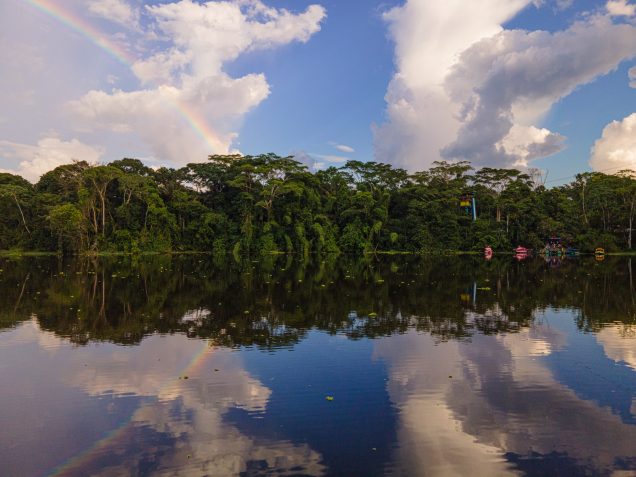China and the Amazon: Toward a Framework of Maximizing Benefits and Minimizing Risks in Infrastructure Development

The emergence of China as a new economic partner for Amazon basin countries has brought benefits to South America and China alike. In less than two decades, China has become an important market for the region’s products and an essential source of finance and investment. The burgeoning relationship has granted China access to new products from the Americas and provided a new market for Chinese exports, financing and overseas investment. In this time, China has become South America’s lead trading partner, and China’s policy banks—the China Development Bank (CDB) and Export-Import Bank of China (CHEXIM)—together constitute the largest source of development finance for the region.
However, this new scenario presents trade offs in the form of impacts on the Amazon Basin’s unique biological and cultural diversity, global climate stability, and well being of local people. Without special care to avoid and minimize ecological and social impacts, the costs of development run the risk of outweighing its gains. The Amazon Basin—Earth’s largest forested expanse—is particularly sensitive to infrastructure growth that leads to deforestation and forest degradation.
With this in mind, a joint report by the Boston University Global Development Policy Center, Inter-American Dialogue, China-Latin America Sustainable Investments Initiative at the Bank Information Center, the Paulson Institute and Field Museum set out to study the risks of further unsustainable investments. Editors Amy Rosenthal, Debra Moskavits and John Reid, and writers Kevin P. Gallagher, Paulina Garzón, Dietmar Grimm, Margaret Myers, Rebecca Ray, John Reid, Amy Rosenthal and Li Zhu provide an in-depth overview of the various factors likely to shape Chinese overseas investment in the coming years, the anticipated effects of Chinese infrastructure development in the Amazon region, and thoughtful and actionable recommendations to ensure best outcomes.
The four large infrastructure projects the team examined included three hydroelectric dams and one navigable waterway in Bolivia, Brazil, Ecuador, and Peru. They examined similar projects in Ghana, Argentina, and Myanmar for regional comparison. Our general findings show that Chinese investment is:
1. Becoming a central force: Chinese policy banks are poised to become major players in infrastructure
finance and development in the Amazon basin.
2. Flowing toward risky projects: Chinese finance in the Amazon has tended to flow toward the more
socially and environmental risky infrastructure projects in the Amazon—including a number of projects
that had been pre-screened as too risky by other international financial institutions.
3. Lacking in strong due diligence: Although some Chinese policy banks and commercial enterprises have
their own voluntary social and environmental guidelines, they rarely are applied or enforced, and the
stated overarching policy for Chinese overseas investment is to defer to the host country regulations
and risk assessment on such matters.
The case study analyzes reveal that the benefits of infrastructure development are maximized and the risks are minimized when the following are in place:
1. Risks are incorporated holistically: All aspects of the infrastructure development process minimize risks, including in design, siting, implementation, and monitoring.
2. Planning is inclusive: Host-country planning processes and regulations that engage multiple stakeholders and values are in place.
3. Risk assessment is internalized and shared: Development banks and commercial enterprises have built-in due diligence tools that assess and monitor the social and environmental implications of a project, fine-tuned in collaboration with host governments, key stakeholders, and regional planning bodies.
4. Performance is independently monitored: Civil society organizations and independent researchers monitor progress toward these broader goals and are enabled to ensure that projects continue to be calibrated toward sustainable, low-impact development.
Inadequate consultation and information deprive Chinese investors of the ability to foresee and avoid social and environmental conflict that create reputational damage for firms, banks and regulators back in China. Better practices, especially in the Amazon, would open doors to new relationships, while reducing unexpected costs and political risk, and preserving the planet’s richest and largest remaining forests. Above all, it is critical that China emerge as a world leader in greening infrastructure development—especially in the fragile and globally important Amazon. China already has demonstrated leadership in addressing climate change, and the country could become a driving force in resilience and sustainability by implementing a green Belt and Road Initiative, in line with host countries’ goals and obligations.
Read the Report